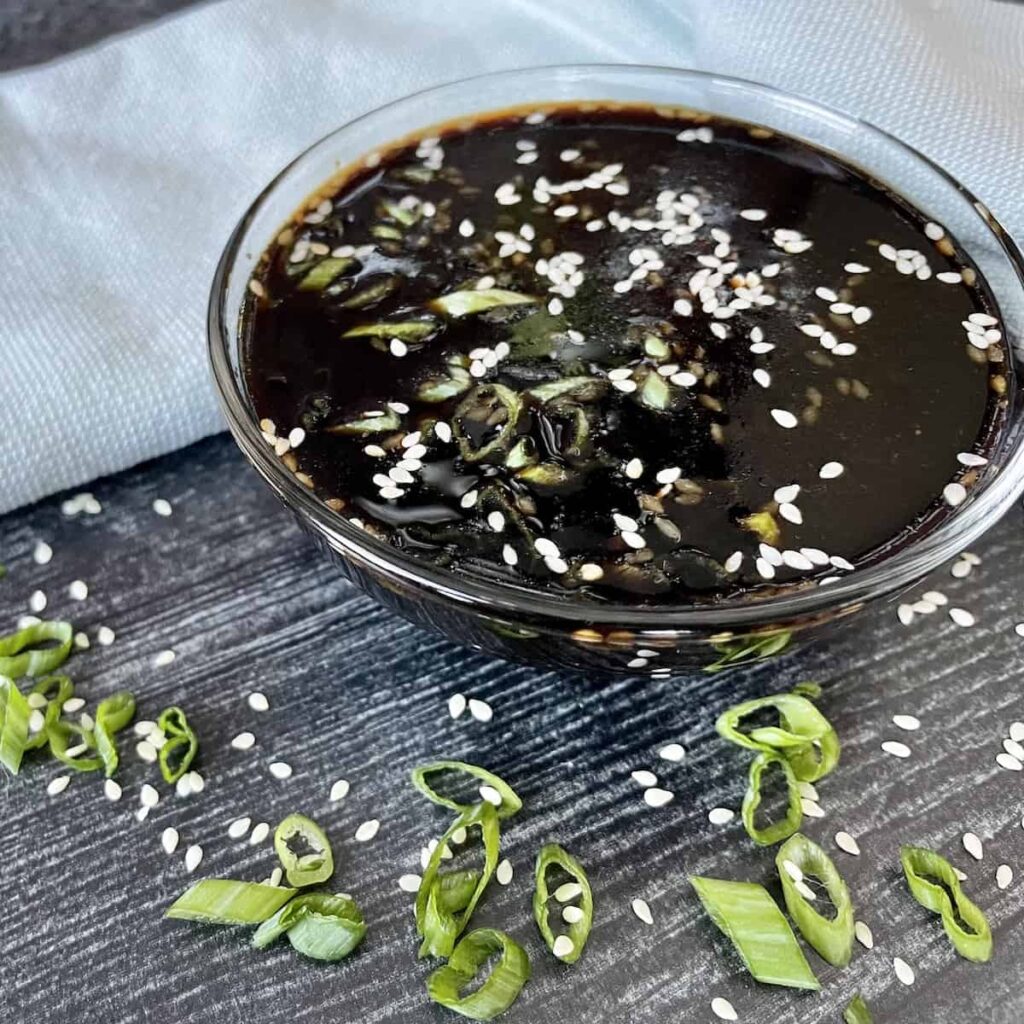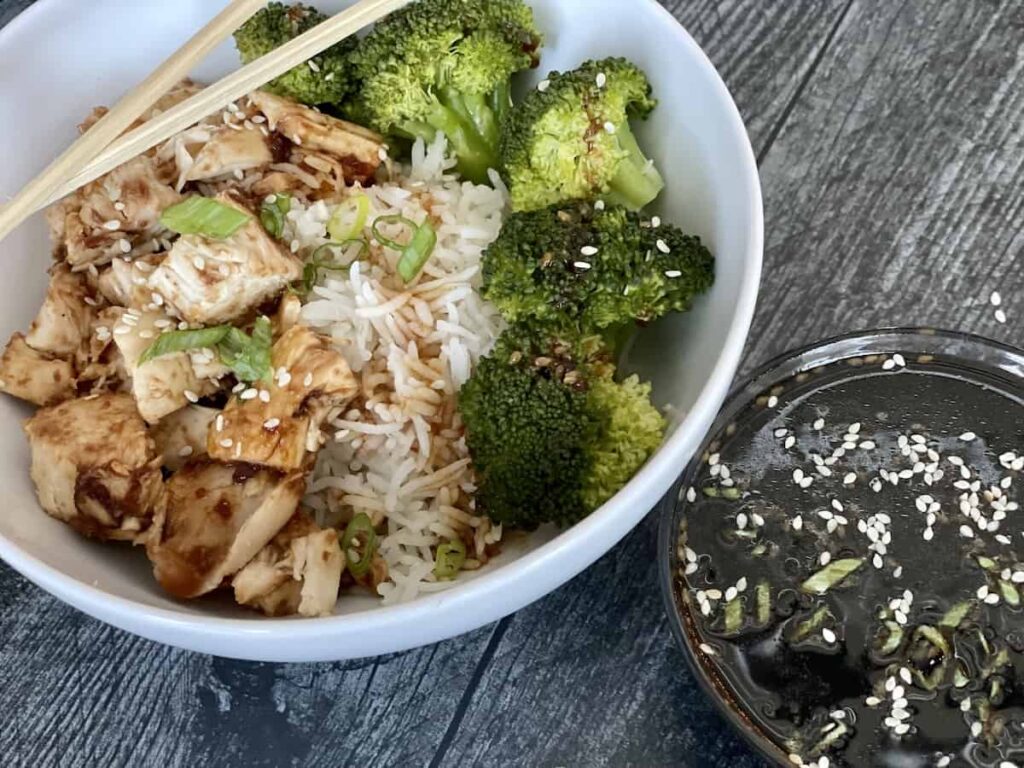This is when you create a sauce so delicious that you want it on everything. Soyaki! Made from a perfect stock of soy for savory quality, sesame oil, garlic, and ginger, it creates a mouthwatering sauce that can enhance any dish in a matter of minutes. You can marinate chicken, toss with tofu, or dip dumplings-no preservatives, just fabulous flavor! Only take one bite, and you’ll never go back to store-bought again!

To elevate your cooking to a whole new level of flavor, soyaki sauce is the flat-out game-changer. An intense flavor blend of soy sauce and teriyaki, this sauce is something you will want to have in your pantry. If you like it to dip it, marinate it, or boldly stir-fry, making this easy soyaki from scratch will provide a combo of tangy, savory, and just a lil sweetness.
What sets this recipe above the rest is its versatile nature; the real ingredients put it ahead of store alternatives like Trader Joe’s soyaki sauce (though we love TJ’s!). Whether the guest of honor happens to be gluten-free, vegan, or just crazy hot, soya can accommodate it all. Drizzle it on chicken breast, serve it with some crispy tofu, or even toasted chickpeas and seafood-the choices are infinite. In addition, making it from scratch is not only simple but makes each batch feel personalized, enriching everything you make for the dinner table.
What Is So Special About Soyaki Sauce?
Soyaki sauce is a perfect-proportioned combo of soy sauce and teriyaki, striking that special balance between savory, sweet, and tangy. From fresh ingredients, like sesame oil, array of Asian spices, and little added sugar, you get a powerful umami-hitting sauce. It also works as a marinade, dip, or glaze to enhance any dish from rice, stir-fried vegetables, or kebabs on a grill with a truly robust flavor. If you’re making Chicken on a Stick, this sauce takes it to the next level with a glossy, caramelized finish.
The best part? Homemade soyaki gives you the ultimate creative control over flavor and texture, providing that fresh, quality delivery each occasion. Unlike store-bought soyaki, you can personalize it to suit everything from individual taste to culture, making every batch unique and adding to the fun of cooking at home.
Homemade Soyaki Sauce Versus Premade Sauce.
Homemade soyaki sauce is a game-changer for those who want to control the ingredients and avoid artificial additives or preservatives often found in store-bought sauces. While store-bought premade sauces are certainly convenient, they may indeed include preservatives and unnecessary sugars, and one might seize, full size, a bottle that is bound to go south in the fridge. However, a homemade version allows one to make just the amount they need, ensuring fresh sauce every time. Whether used as a teriyaki marinade or a sprinkling for stir-fry vegetables, homemade is an inexpensive choice that gives you freedom in flavor and provides a down-to-earth, vibrant touch to your meals.
The Health Benefits of Soyaki Sauce.
Soyaki sauce provides multiple health benefits since it is usually low in calories and is a good source of antioxidants from ginger and garlic, which benefit lowering inflammation and aid the immune system. The sesame oil in the sauce contains healthy fats, which promotes heart health. It further provides essential minerals such as calcium and magnesium from sesame seeds. Furthermore, low sodium will take away some of the salt, and consuming salt may help lower blood pressure.
Ingredients list:
1 tbsp fresh ginger, minced
3-4 cloves garlic, smashed
4 tbsp low-sodium soy sauce
1 tbsp water
3 tbsp brown sugar
1 tbsp sesame oil
2 tsp white distilled vinegar
1 tsp toasted sesame seeds
1 tsp granulated garlic
1 tsp onion powder
Optional: cornstarch slurry
Simple Instructions on Making Soyaki Sauce
Making soyaki at home isn’t as complex as it may look. First Step: Prepare the aromatics with your garlic and minced fresh ginger; place them on a cutting board and smash the garlic cloves for composing an aromatic base of extreme flavor. Place all the above ingredients in a small pot at medium heat by adding 1/2 cup of low-sodium soy sauce, 2 tablespoons of brown sugar, 1 teaspoon of white distilled vinegar, 2 tablespoons of water, and finally 1 tablespoon of sesame oil. Let the mixture simmer gently for a few minutes. This will make the sugar completely dissolve and will allow the flavor to mingle.
For an even more gravy-like consistency, you could add a cornstarch slurry. This refers to 1/2 tablespoon of cornstarch mixed well with half tablespoon of cold water, to the simmering sauce. Mix well and bring to a minute until it achieves a thicker consistency.Once done, pass the sauce through a mesh wire strainer into a small bowl, to remove solids, and have a smooth silky sauce. Let it cool to just the right consistency, thin enough to marinate with, yet just thick enough for dipping; it should last two weeks in an airtight jar in the fridge, though probably not that long!
Handy Tips that Preserve the Quality of Soyaki Sauce
Balance: A good Soyaki sauce should strike a balance between salty (soy sauce), sweet (sugar or honey), acidic (rice vinegar), and savory (garlic, ginger, or sesame oil). Taste and balance the sweetness and tartness to your palate.
Viscosity Is the Key: Slow-cook the sauce a bit longer for a thicker texture. On the other hand, use a cornstarch slurry (1 teaspoon cornstarch with 1 tablespoon water).Stir thoroughly to dispel any lumps.
Going Fresh: Fresh garlic and ginger give flavor a great aroma and taste. Pre-ground or jarred types tend to have lower flavors.
Taste Along the Way: Intermittently taste through your sauce. Make adjustments with salt, sugar, or acid slowly, in increments, so one overtone does not take over the mixture.
Top Mistakes When Making Soyaki Sauce
Over-Reduction: Too long cooking can lead to sauce becoming too salty and viscous. Keep an eye on it to prevent it from becoming a sticky mess.
Even Guessing: If preparing for the first round, you can mess with the ratio of the components. Measure things out, precise or accurate, to keep things in line.
Adding Cornstarch Too Soon: Cornstarch can add thickness after the cooking is done. Adding it early could cause the sauce to mound or burn itself with nearby contacts.
Ignoring Rest Time: Let the sauce rest for a few minutes after cooking. This time allows the flavors to mingle beautifully.
It’s about long patience, balance, and details mastery for Soyaki sauce!

Frequently Asked Questions
1. Can it be gluten-free?
Definitely! Use tamari or another gluten-free soy sauce alternative instead of regular soy sauce. Also, read the labels of vinegars and sweeteners because they sometimes contain hidden gluten.
2. How long can I store it?
Homemade soyaki sauce can last 2 weeks in an airtight container in the refrigerator. Store in an airtight container when cool and never put the spoon back into the jar once you’ve dipped it in whatever you are eating.
3. What dishes do you recommend?
Soyaki sauce is ideal with grilled and stir-fried chicken, salmon, sautéed tofu, and roasted vegetables. An excellent marinade or dipping sauce for dumplings and spring rolls.
| Recipe for Soyaki Sauce A delicious soyaki sauce that will replicate the real recipe through its perfectly balanced soy, sesame, and spices. Just perfect for marinating things as well as stir frying or just drizzling it over your favorite dishes. Course: Condiment Cuisine: Asian,Chinese Prep Time: 10 minutes Cook Time: 10 minutes Total Time: 20 minutes Servings: 4 Calories: 110 per serving Yield: 1 cup Equipment Cutting board, knife, sauce pot, wire mesh strainer, small bowl. Ingredients Fres. Ginger (1 tbsp, minced) Fresh garlic (3-4 cloves, minced) Low sodium soy sauce (4 tbsp) Brown sugar (3 tbsp) Sesame oil (1 tbsp) White vinegar (2 tsp) Toasted sesame seeds (1 tsp) Cornstarch slurry (optional; ½ tbsp cornstarch mixed with ½ tbsp cold water) Sugar (¾ cup, granulated) Garlic (1 tsp, granulated) Ground ginger (1 tsp) Onion powder (1 tsp) Instructions Start dicing the ginger and garlic in a cutting board. Mince one tablespoon of fresh ginger, also smash and mince three-four cloves of fresh garlic. Add ginger, garlic, 4 tablespoons low-sodium soy sauce, 3 tablespoons brown sugar, 2 teaspoons white-distilled vinegar, 1 tablespoon water, 1 tablespoon of sesame oil, to a saucepot. Place this partly on the stove over medium heat and let simmer slowly for 5-7 minutes. This will help beautifully meld the flavors. To make the Soyaki sauce thicker and gravier, whisk together ½ tablespoon of cornstarch with ½ tablespoon of cold water to make a cornstarch slurry. This will be added to the simmering mixture and whisked until combined. Boil for approximately 1 minute until thickened. Once well-developed, strain the sauce through a mesh wire strainer into a small bowl. This will separate the solids leaving you with a smooth and silky sauce. Finish with a festoon by adding 1 teaspoon of toasted sesame seeds into the sauce, which gives the Soyaki sauce added texture and nutty flavor. Let cool and transfer to a storage container, like a mason jar, and refrigerate for up to 2 weeks. Nutrition Calories, 48 kCal ; Carbohydrates, 10g ; Protein, 2g ; Fat, 0.3g ; Saturated Fat, 0.04g ; Polyunsaturated Fat, 0.1g ; Monounsaturated Fat, 0.1g ; Sodium, 1080mg ; Potassium, 49mg ; Fiber, 0.2g ; Sugar, 9g ; Vitamin A, 0.1IU ; Vitamin C, 0.04mg ; Calcium, 7mg ; Iron, 1mg; Soyaki sauce recipe Amount per serving – Calories 110 – Fat 5g 8%- Saturated Fat 1g 6%- Polyunsaturated Fat 2g – Monounsaturated Fat 2g 4%- Sodium 772mg 34%- Potassium 116mg 3%- Carbohydrates 15g 5%- Fiber 0.3g 1%- Sugar 12g 13%- Protein 2g 4%-Vitamin A 0.3IU 0%-Vitamin C 1mg 1%- Calcium 29mg 3%- Iron 1mg 6%. |
